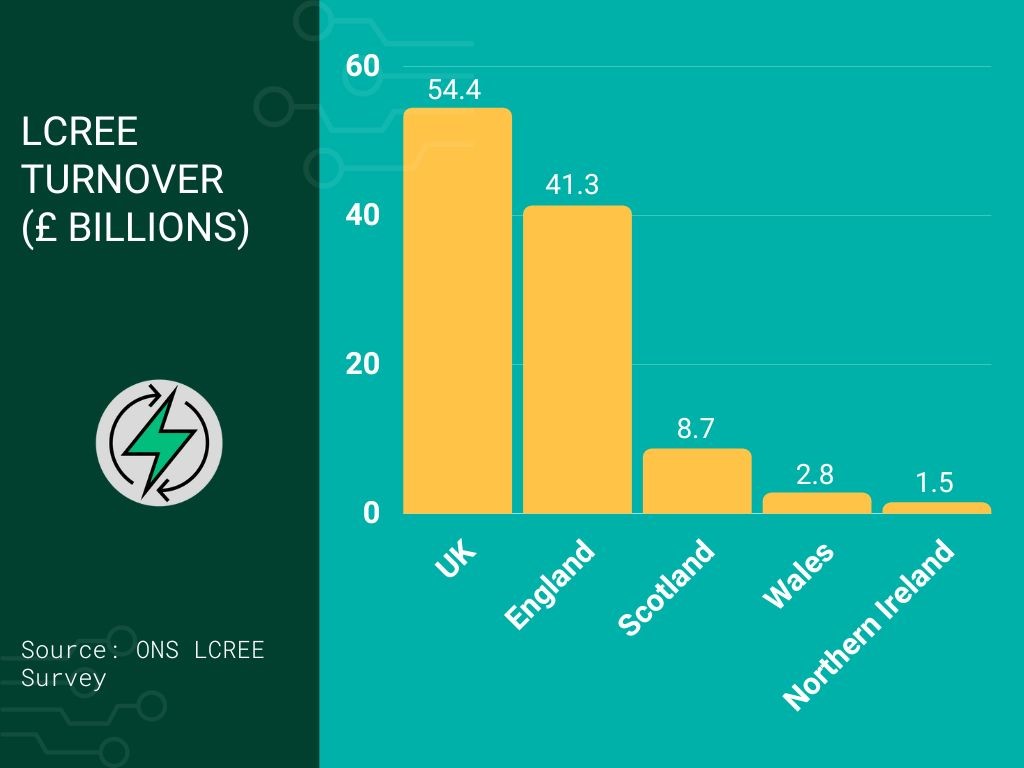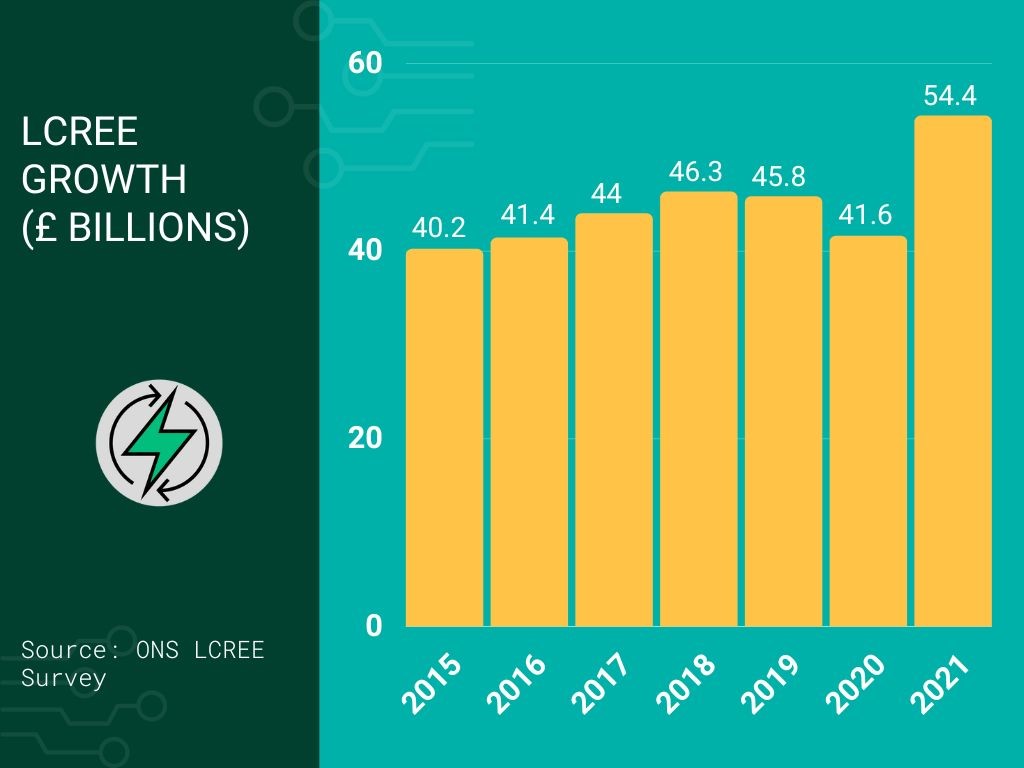
Green industries growing four times faster than the rest of UK economy
14 March 2023
The data shows that low carbon and renewable energy economy (LCREE) saw revenues grow 30.8 per cent to £54.4bn between 2020 and 2021. Compared with the national GDP increase of 7.5 per cent in 2021, green industries grew four times faster than the rest of the UK economy. Despite evidence of a booming economy set to deliver an increasing number of jobs, the UK government is behind on its pledge to deliver two million jobs by 2030.
The ONS defined businesses within the LCREE as being in one or more of 17 sectors, including nuclear power generation, renewables, energy efficiency, electric vehicles and energy flexibility.
Energy efficient products had the highest LCREE turnover of £19.6bn, or 36 per cent growth, in 2021, followed by LCREE manufacturing with turnover of £16.9bn or 31.1 per cent growth. Low carbon electricity saw a large increase with turnover rising from £13.4bn to £18.2bn 2020-2021, and the construction industry saw a turnover increase from £9bn to £14.6bn over the same period.
Analysis from the Office of National Statistics (ONS) has shown employment in the green sector grew 16.4 per cent to almost 247,400 full time employees in 2021. The construction sector also took the lion’s share of LCREE employment, with 91,000 FTE employees in 2021, an increase of 19 per cent compared with 2020 figures. Overall, the vast majority of LCREE groups saw both turnover and employment increase between 2020 and 2021.
In a statement from the ONS about the report, it was noted that “although a proportion this observed [LCREE employment] increase could be attributed to the recovery of the UK economy from the pandemic, this is not likely to be the whole picture.” A general attitude shift towards sustainable growth and decarbonisation policies has led to surges in demand for renewable energy and energy efficiency solutions.
Another notable boom can be spotted among the EV and low emission vehicles sector. The ONS have recorded a year-on-year employment increase of 71 per cent, with almost 40,000 FTE employees working in the sector. Employment in the low carbon services field has also documented a year-on-year increase of 35 per cent, with the majority of roles covering the provision of services to the construction, manufacturing and energy sectors.
Despite higher turnover and employment within the green economy, sector sceptics have raised concerns over the UK’s dilatory progress compared with more proactive policies in the EU and US.
The likes of energy efficiency upgrades, heat pump and solar installation are still facing employment slumps, with figures yet to recover to pre-2015 levels. Nonetheless, few sectors can brag turnover growth of 30.8 per cent amid a climate of prolific economic insecurity. As global net zero deadlines loom and policy design becomes increasingly conscientious in favour of climate goals and phasing out the likes of fossil fuels, the green economy can expect continued growth and momentum.





